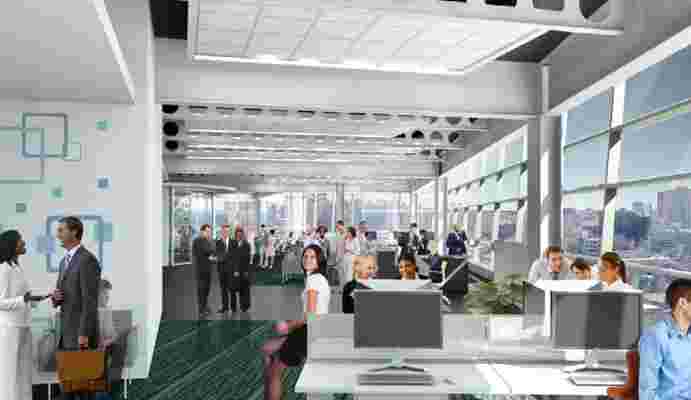This Philadelphia Building May Show the Future of Eco-Friendly Construction
The relationship between design and climate is dynamic: Every day, it seems, new architectural technologies emerge that allow us to better react to, and in some cases harness , the world around us. Chief among those innovating in this space is the Sheward Partnership, a Philadelphia-based firm that recently introduced plans for a self-tinting glass office building in the City of Brotherly Love : 3.0 University Place.
Slated for completion in 2018, 3.0 University Place is expected to be the first building of its kind to achieve LEED Platinum certification, with its self-tinting windows specifically designed to combat the problem of excess cooling costs produced by direct sunlight and ensuing glares. Manufactered by Minnesota glass developer SageGlass, the windows operate with a sensor technology not unlike that of self-tinted eyeglasses, which register light intensity and change accordingly. On days when office workers simply want more shade, the windows can also be adjusted by remote control.

A rendering of the second floor of 3.0 University Place.
A pioneering force in Philadelphia’s sustainable design scene, the 189,000-square-foot building will contain a variety of other remarkable eco-friendly features, including a heating and cooling system that minimizes energy spent by fans, high-efficiency LED lighting, and a green roof that collects rainwater for reuse in cooling and irrigation activities. All said and done, 3.0 University’s developers expect to see a 50 percent energy reduction relative to comparable commercial spaces. The structure will be the first of several LEED-certified buildings to be developed in the West Philadelphia neighborhood.